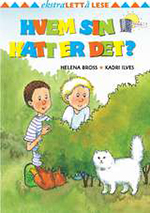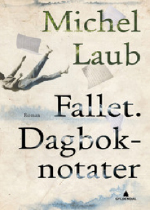Jeg bekjenner av Jaume Cabré
Jaume Cabré: "Termino una novela y me desmayo"
➡ ♥♥♥ Link: Jaume cabre jeg bekjenner
➡ ♥♥♥ Link: https://dating18plus.ru/Elizabeth1988
Hi havia treballat durant tretze anys de mestre de capella i hi havia compost nombroses peces musicals davant lâorgue del Pi. Midtveis nede i Bjørneskråningen satte han seg på huk og gjorde sitt fornødne ved roten av en forkullet ung gran.

In 2000 there is a return to fiction with , a collection of fourteen stories that are interrelated by hidden impulses. Ekaterina Guschina, et al Inostranka. Hans Høyærverdighet Josep Torras i Bages hadde person- lig besluttet at i betraktning av de glimrende kvalifikasjo- nene til den intelligente seminaristen, som sÃ¥ gjerne holdt seg til boken, som var sÃ¥ from og høflig, dannet tross al- deren, hadde han fÃ¥tt tak i en kostelig blomst som trengte et fruktbart jordsmonn, og i den skrinne hagen ved semina- ret i Vic ville han visne, og dermed ville man ha sløst bort denne Guds gave med hans usedvanlig høye og medfødte for- stand. På sine eldre dager nedskriver han sine bekjennelser rettet til Sara, hans livs store kjærlighet.

Ruta 'Senyoria' de Jaume Cabré - Tal com sâexplica al llibre, pel carrer de Sant Sever, on hi ha lâesglésia del mateix nom dâestil barroc, sortien els condemnats a mort dels judicis que se celebraven a lâantiga Reial Audiència de Barcelona. De Stimmen des Flusses trans.
He graduated in Catalan Philology from the , is a high-school teacher on leave of absence, professor at the , and a member of the Philological Section of the. During many years he has combined literary writing with teaching. He has also worked in television and cinematographic scriptwriting. He collaborated with as creator and scriptwriter of the first Catalan television series: La Granja 1989—1992 , followed by other shows like Estació d'Enllaç 1994—1998 , 2000 and the made-for-television movies La dama blanca 1987 , Nines russes 2003 and Sara 2003. He also wrote, together with Jaume Fuster, Vicenç Villatoro and Antoni Verdaguer, the script for Antoni Verdaguer's films La teranyina 1990 , based on his novel, and Havanera 1993. His literary work The beginnings He started with two collections of short stories: Faules de mal desar 1974 and Toquen a morts 1977. His first novel, Galceran l'heroi de la guerra negra 1978 brings up the recurrent subjects of his work: power and the human condition. The character of the bandit Jaume Galceran, full of contradictions, is portrayed as a reluctant hero during the. In the second novel, Carn d'olla 1978 , a very different character stands out, Barringa Barranga, an ex-prostitute who has established a network of relationships in the Barcelona neighborhood of Sant Antoni. In El mirall i l'ombra The mirror and the shadow—1980 music appears for the first time and, in a certain way, the reflection on the value of artistic creation, which will be constant subjects of his work from this point forward. In 1980 he published a work of juvenile fiction, the novel La història que en Roc Pons no coneixia and a year later, the short story El blauet. The consolidation During 1984 and 1985 three novels appear that will form the Cicle de Feixes, in which he had worked for many years. In 1984 La teranyina is published, a story set during Barcelona's and which narrates the events of those moments not in Barcelona but in the neighboring fictional city of Feixes, based on the actual city of. The fight for political, economic and family power is reflected in the movements of several members of the Rigau family and of the other characters that live in this novel. The same 1984 sees the publication of Fra Junoy o l'agonia dels sons a novel that develops slowly, like all of Cabré's novels from now on, where, besides the underground movements of the Feixes' ecclesiastical world and the monastery of la Ràpita of which the protagonist friar is the confessor, music plays a very important role. Some of the characters in La teranyina and the world of Feixes are also present in this novel, which in a certain way is its continuation. It highlights the figure of Fra Junoy, who is a kind of victim of those who have the power of manipulation. In 1985 the final chapter of the Freixes Cycle Luvowski o la desraó was published as a novelette, in a larger collection of short stories: Llibre de preludis, in which music plays an even more prominent role. In 1984 Cabré published his second work of juvenile fiction: L'home de Sau. Maturity In 1991 Senyoria is released, a novel about the judicial corruption that emanates from absolute power, set in Barcelona at the end of the 18th century. If with Fra Junoy he painted a victim, now with don Rafel Massó, the civil regent of the Court of Barcelona, he paints the figure of the hangman, with all his fears and selfishness. L'ombra de l'eunuc 1996 is a novel that recounts the last years of , the Transition and the years that followed from the author's perspective, personified in Miquel Gensana, the protagonist. At the same time it is a novel of reflection about artistic creation and, especially, about creating music. The story structure is based on the structure of 's. While Cabré began work on the following novel, he also began to branch out into other genres. In 1999 he published El sentit de la ficció, an essay on literary creation, writing, and about his own cooking. In 2000 there is a return to fiction with Viatge d'hivern, a collection of fourteen stories that are interrelated by hidden impulses. The reader keeps on discovering these relationships as he advances in the stories; and the ties remain even though each story is set in very different places and periods. It is a look at a that we have not been able to construct in any other way. The following year, 2001, he published and performed for the first time in the , with the play Pluja seca, in which he wrote about forgery of the historical memory and about the fact that history is written by the victors. The drama starts in the castle at , which has been converted into a Papish court true for them, schismatic for on the day that dies and the decimated cardenalici school decides to nominate a successor who is viewed in Rome as an. Les veus del Pamano 2004 begins in the forties, in a little village at the foot of the Catalan Pyrenees, , and it continues to the present day, with a parade of characters like the teachers Oriol Fontelles and Tina Bros, or the woman Elisenda Vilabrú. The historical memory, the impossibility of forgiveness and the fear to forget are some of the subjects that turn up in this novel. In 2005 he published his second essay: La matèria de l'esperit about literary reading. His latest novel, Jo confesso I confess , was published in Catalan in 2011. In it, the author reflects on the concept of evil throughout human history through the life of a cultured and intelligent main character born in post-Civil War Barcelona. The English edition was published in 2015 by Arcadia Books in London. Dolores Martínez Torres Ed Galaxia. Bernard Lesfargues Christian Bourgois Éditeur. L'ombre de l'eunuque trans: Bernard Lesfargues Christian Bourgois Éditeur, 2006. Simona Škrabec Študentska zaloba - Beletrina. Las voces del Pamano trans. De Stimmen des Flusses trans. De stemmen van de Pamano trans. Le voci del fiume trans. As vozes do rio Pamano trans. Les voix du Pamano trans. Fray Junoy o la agonía de los sonidos. Pat Lunn Swan Isle Press. Concha Cardeñoso Sáenz de Miera Ed. Mara Faye Lethem Arkadia Books. Concha Cardeñoso Sáenz de Miera. Kirsten Brandt i Petra Zickmann. De Bekentenis van Adrià trad. Bashkim Shehu Institui i Dialogut dhe Komunikimit. Kjell Risvik Cappelens Damm Forlag. Ekaterina Guschina, et al Inostranka. El hombre de Sau trans. El extraño viaje que nadie se creyó. Literary prizes Jaume Cabré receiving award with ,.

